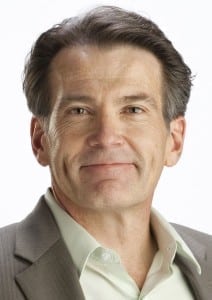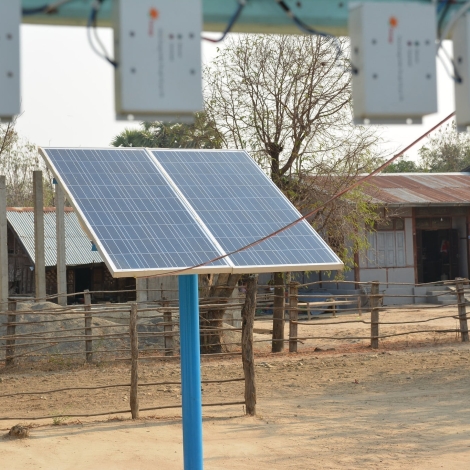 We need to take a critical look at centralized power, Dr. Bryan Willson says. Piping power from giant plants may not be the way to deliver electricity to every home in developing countries, and the method may have already outlived its usefulness in the developed world. Dr. Willson is a professor of mechanical engineering at Colorado State University in the United States on assignment as a Program Director at the US Advanced Research Projects Agency-Energy. He founded CSU’s Engines and Energy Conversion Lab, and serves as Executive Director of the the university’s Energy Institute. The Energy Institute researches clean cookstove, biofuel and distributed power technology. Its products improve lives worldwide, in developing countries and anywhere else. We asked Dr. Willson four questions.
We need to take a critical look at centralized power, Dr. Bryan Willson says. Piping power from giant plants may not be the way to deliver electricity to every home in developing countries, and the method may have already outlived its usefulness in the developed world. Dr. Willson is a professor of mechanical engineering at Colorado State University in the United States on assignment as a Program Director at the US Advanced Research Projects Agency-Energy. He founded CSU’s Engines and Energy Conversion Lab, and serves as Executive Director of the the university’s Energy Institute. The Energy Institute researches clean cookstove, biofuel and distributed power technology. Its products improve lives worldwide, in developing countries and anywhere else. We asked Dr. Willson four questions.
E4C: What area of energy production technology should be the upcoming generation of engineers focus their research on?
BW:Small-scale micro-grids — building grids from the bottom up. The concept of DC grids instead of our current AC grids is particularly intriguing in the developing world since almost all of the loads are DC (lighting, cellphones, radio, television).
Small-scale natural gas production is a big idea that I believe is under-explored.
E4C: What is one mistake that people in the field of energy production make that they just keep making?
BW: Just as the developing world has leapfrogged over landlines for telephones, we need to rethink our hyper-focus on extending the large power lines from central generation facilities to serve remote locations.
E4C: Can small-scale energy generators like solar-powered electricity kiosks or small rooftop panels compensate for the lack of grid energy in parts of developing countries? In not, are there better solutions?
BW: Distributed production definitely has a place. Whether it’s rooftop solar, small wind, or micro-hydro. But the effectiveness of these technologies can be dramatically enhanced by incorporating them into village scale micro-grids.
E4C: What do you think that energy production will look like in developing countries in 20 years?
BW: In 20 years I hope to see a continental grid across the developing world but built from the bottom up. This means beginning with households that we stitch together into village scale micro-grids then the village scale grids are stitched together into regional grids yielding a more efficient and resilient overall grid structure.


Very true……i have always believed that micro grids will bridge the energy divide, provide solutions until the large ‘mega’ grid arrives and also ginger a revolution in research & development that would see the eventual ‘convergence’ of micro & macro or mega in the form of true robust smart grids
Interesting insights, and i definitely echo your sentiments on microgrids as a leapfrog technology, analogous to mobile phones. Nevertheless, i wouldn’t underestimate the complexity of “Stitching together” the microgrids for bottom-up universal electrification. What standards exist (or need to exist) for distributed energy resources in developing countries? What products are emerging with open-architecture solutions for greater connectivity?
Hi there, just became alert to your blog thougrh Google, and found that it is truly informative. I? going to watch out for brussels. I?l appreciate if you continue this in future. Numerous people will be benefited from your writing. Cheers!
Cost of manufacturing can be a deffering factor in remote areas. Most rural places have not the Resources to implement most of what is being offered. This day & age power is needed to just keep up with the rest of the world. Every little bit of help of any sort is sorely needed to those who need it. We all have resourses that can be used resoursouly if it can be managed by people in the know.
Dr. Willson regarding about the micro grid, in the philippines its to much needed the source of enegry, but the resuerces was a lot of them but power energy it’s not enough to consumed and sustained needs of people thats way they creat a coal powerplant. Your scope is good and ecoinviromental project its good for bussiness in our country now is under developing country. But my question is: its capable for all weather condition like typon or other eregularities about the weather condition. Thanks you your idea. I get a more knowedleged of your project a micro- grid it’s good and nice to developed in my country. beacuse to much dipresed area without electricity or power line. I salute of you Thanks you again and more power.